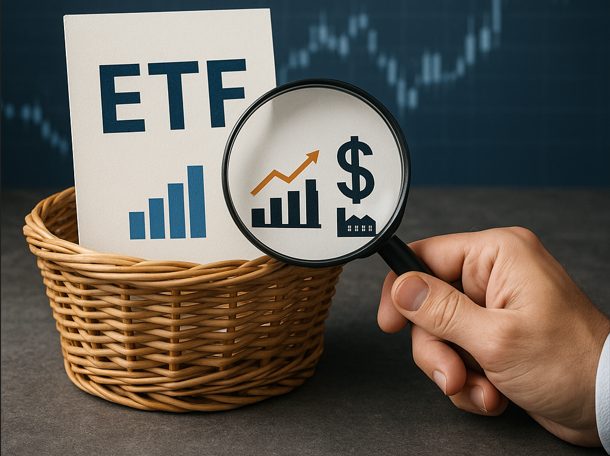While the number of trusts has been falling, certain other, newer, structures have been multiplying. Among these are Long Term Asset Funds (LTAFs) and private structures. Another is the subject of this piece: active Exchange Traded Funds (ETFs).
An interesting recent development in the investment companies sector is the planned conversion of Middlefield Canadian Income Trust from an investment trust to an active ETF. This has recently received regulatory approval. The change was largely the result of pressure from Saba Capital Management, which has been campaigning for fundamental change at numerous investment trusts over the past year.
For many readers, this will beg the question: what is an active ETF and how does it work? We thought that it might be a good idea to answer those questions.
The newly structured Middlefield ETF will retain the previous trust’s focus on high-yielding North American large-cap companies, while reducing fees, improving liquidity and eliminating the persistent discount to NAV (discounts on active ETFs, if they exist at all, are usually small and short-lived).
However, we are not sure that a conversion of a small trust like Middlefield, essentially made under duress, will help establish the structure in the UK. What we would prefer to see would be a well-known manager with an enviable track record launch a new product within an active ETF wrapper, invested in a liquid asset class and accompanied by a sufficient sales and marketing push to make it a success. We shall see.
Many investors are familiar with ETFs, investment funds that trade on a stock exchange. Most are passive instruments, aiming to track a particular index. However, as their name suggests, active ETFs are managed actively, with the freedom to aim for outperformance of a specific benchmark. As such they have much in common with actively managed open-ended funds (OEICs and unit trusts), except they can be traded at any time their exchange is open, rather than once a day or less. Other advantages are typically lower fees and greater transparency, with most required to publish their holdings on a daily basis.
In reality, how truly “active” an active ETF is, varies greatly. Many are quant-based, using algorithms and quantitative models to make asset selections. Such rules and data-driven strategies can, in theory, outperform benchmarks, while maintaining a low tracking error. However, there are also a growing number of what could be described as truly active ETFs, particularly at the smaller end of the market, where humans rather than algorithms make the decisions and there is the potential for more significant outperformance (and of course the opposite).
The European active ETF market is experiencing notable growth, albeit from a modest base. As of early 2025, the structure accounted for approximately 2.5% of Europe’s €2.2 trillion ETF market, with assets under management (AUM) of c€55 billion. 7.7% of all European ETF inflows in 2024 were into active structures, up from 4.6% in 2023. Nonetheless, active ETFs have been slower to take hold in Europe as compared to the US (partly due to specific tax advantages that they confer in America), which already has a $1 trillion market (close to 10% of the total ETF market).
The European market is currently dominated by JP Morgan, which accounts for well over half of current AUM. Its core offering is the Research Enhanced Index Equity range of funds, covering global, US, Europe, Emerging Markets, Japan and eurozone equities. All aim to generate positive alpha from security selection, while maintaining neutral sector positioning and a low tracking error. Therefore, all provide a return close to their respective benchmarks.
Other providers with a significant presence in the European market include Fidelity, PIMCO, BNP Paribas, Invesco and AXA. Many other fund management firms have recently launched products or are set to do so. There are also a number of smaller, often less well known, companies in the space. Many of these partner with white-label platforms like HANetf, companies that specialise in enabling asset managers to launch innovative and thematic ETFs in Europe without the need to build their own infrastructure. Across the sector, nearly all active ETFs are Undertakings for Collective Investment in Transferable Securities (UCITS) compliant.
More broadly, sustainability has become a defining theme within the European active ETF market. Many regulators and investors remain cautious about the ESG credentials of passive funds. In contrast, the discretionary nature of active ETFs allows portfolio managers to go beyond mechanical index screening and engage more deeply with ESG analysis. Many active ETFs in Europe now align with Articles 8 or 9 of the Sustainable Finance Disclosure Regulation (SFDR), reflecting their commitment to promoting environmental or social characteristics, or even targeting sustainable investment objectives outright.
Performance in the sector has, to date, been somewhat mixed. Using Morningstar data, we have been able to conduct an analysis of 48 funds. Of those that have a one-year performance track record, 17 have outperformed their stated benchmark, while 31 have underperformed. At first sight, this is disappointing, but – as with any investment – a one-year picture is not long enough to make a judgement.
For those with a three-year record, the figures are better; 15 outperformers and 16 underperformers, and for five years, 12 and 10 respectively.
At QuotedData we are keeping a keen eye on this rapidly expanding sector. Will this new vehicle reshape the asset management industry, which in many ways has been in decline? In an attempt to help investors make sense of it all, we have published a user-friendly guide on our website. We are also intending to publish a wider sector note shortly, and will keep abreast of developments over the coming months.
